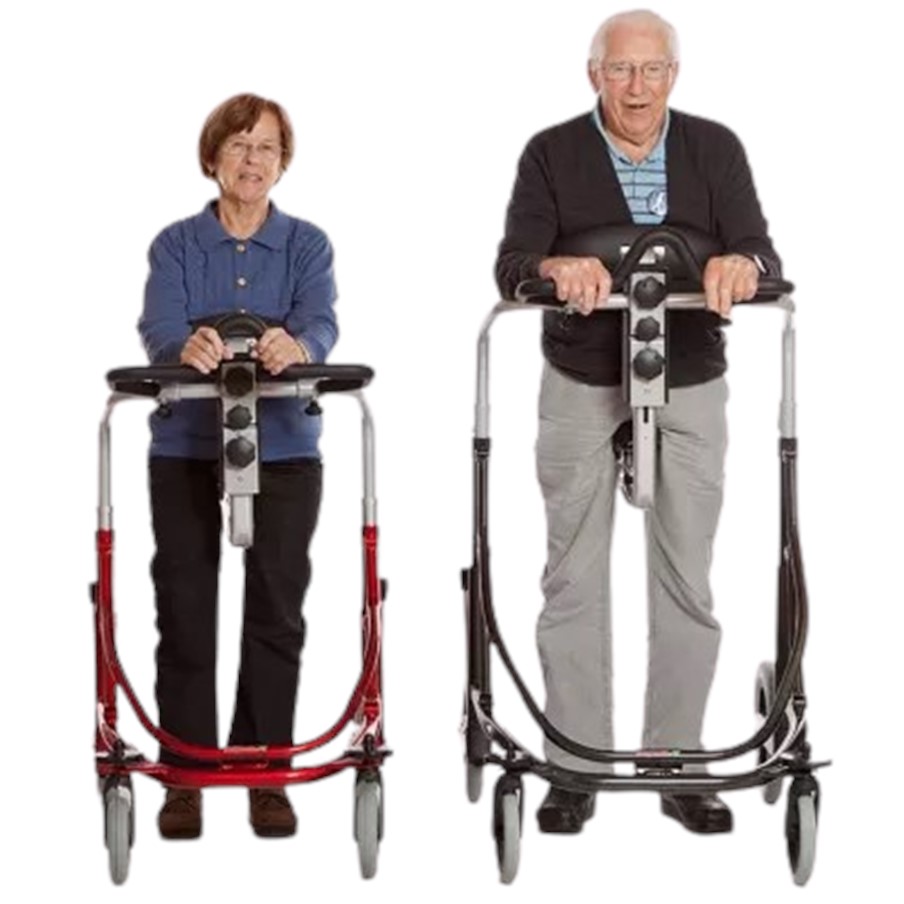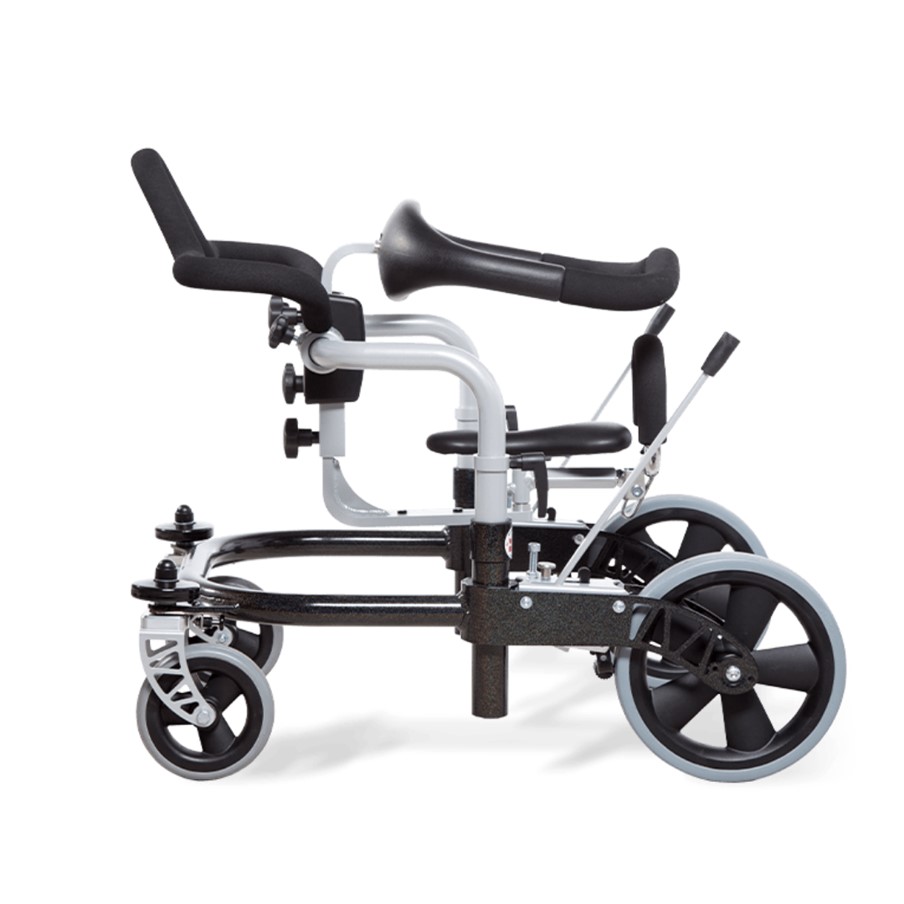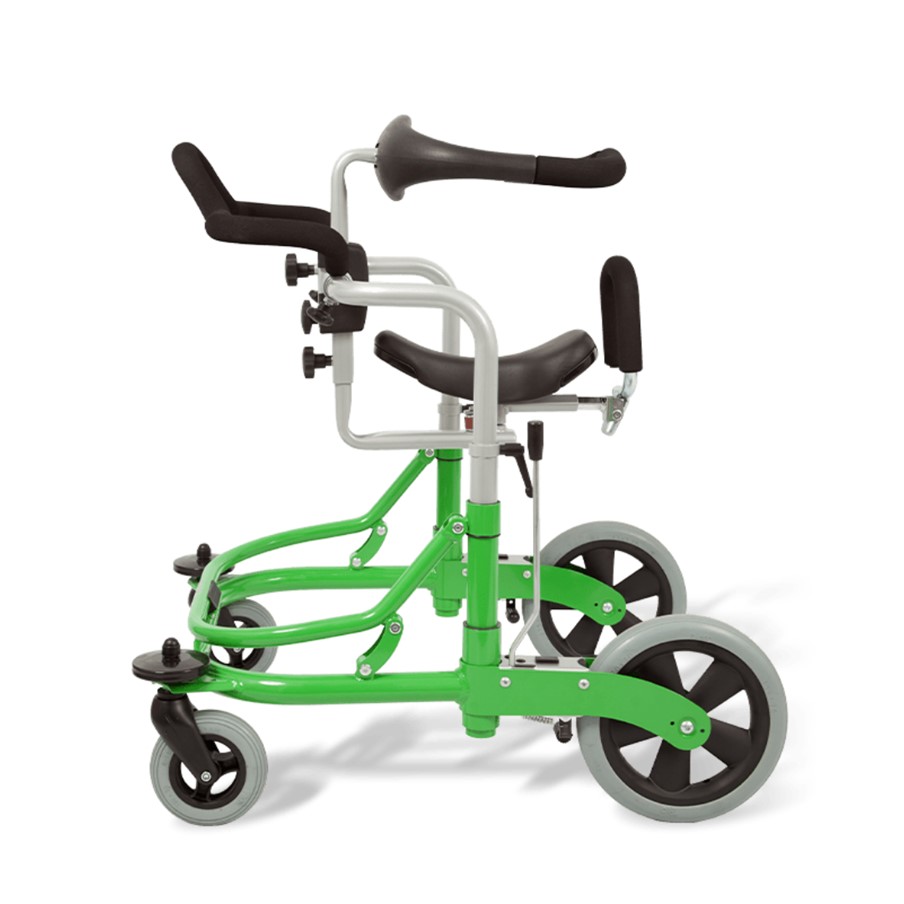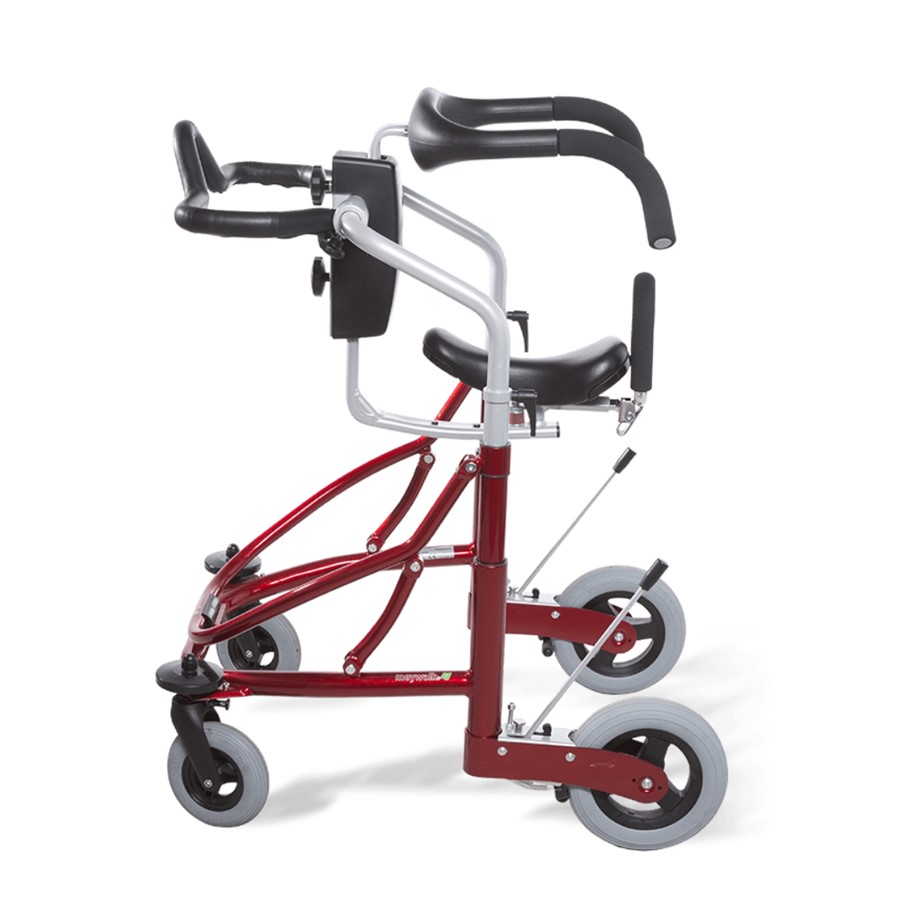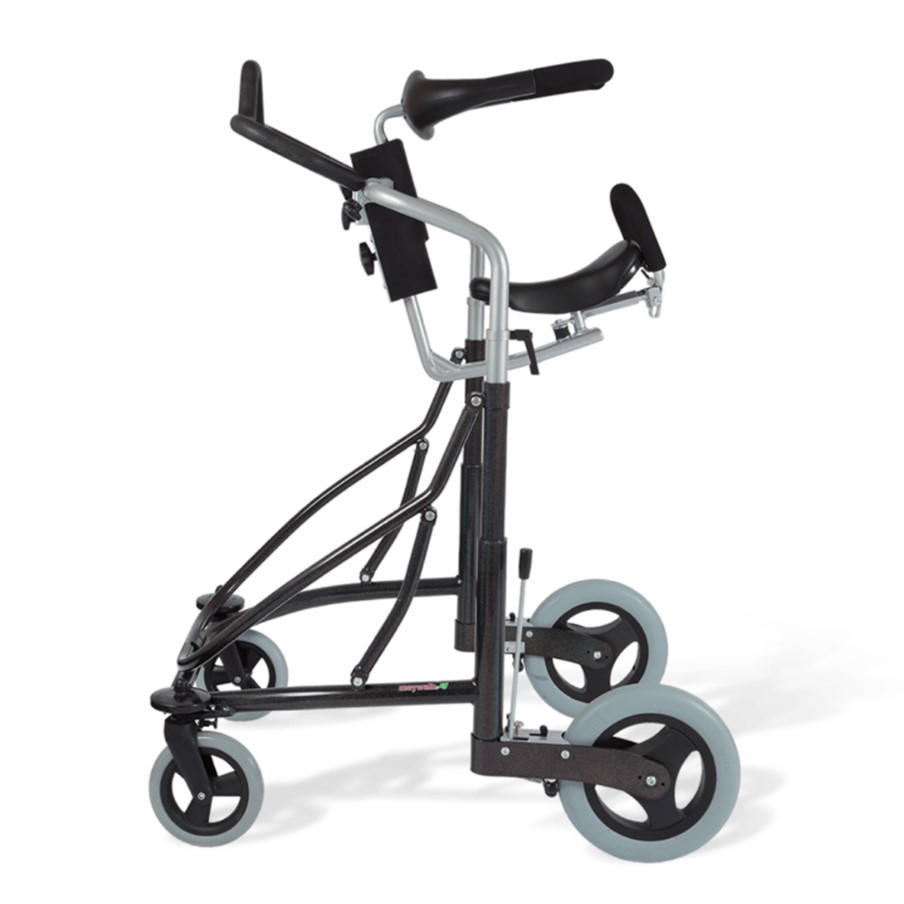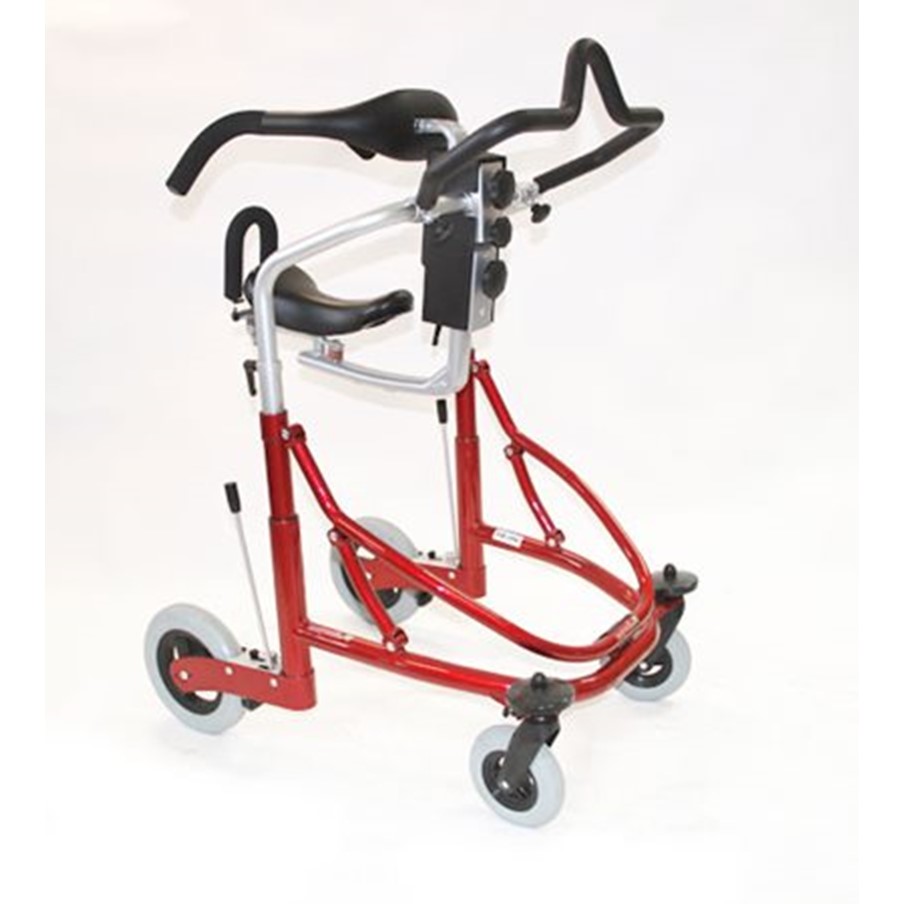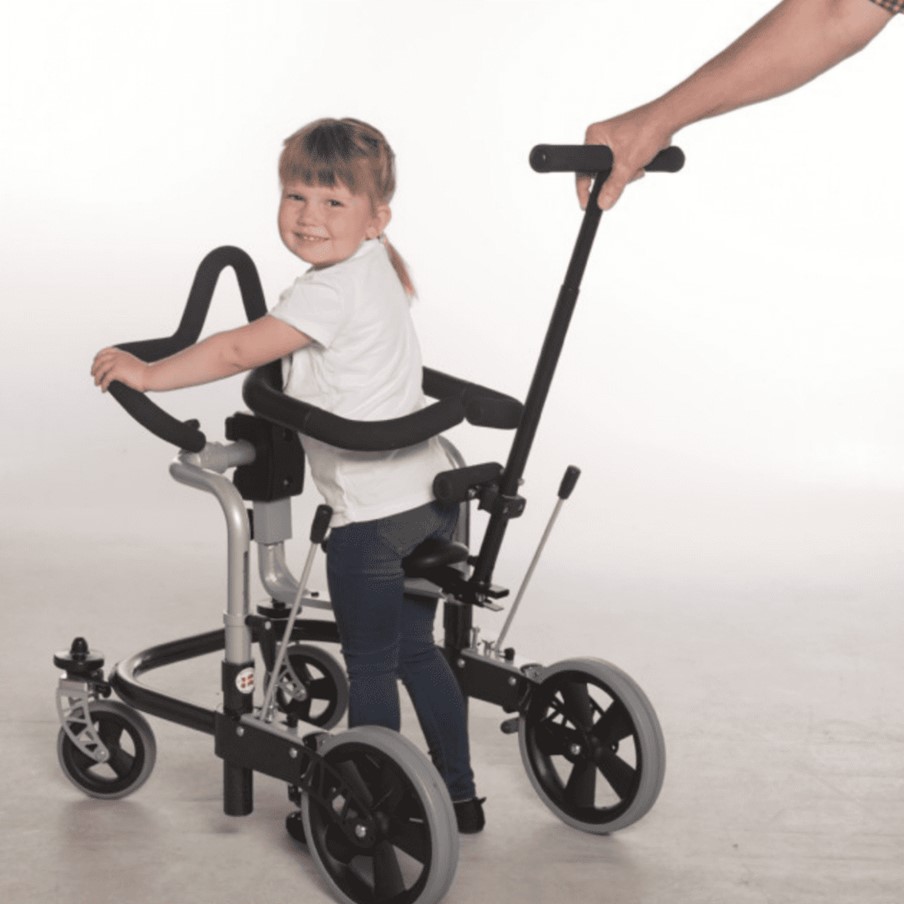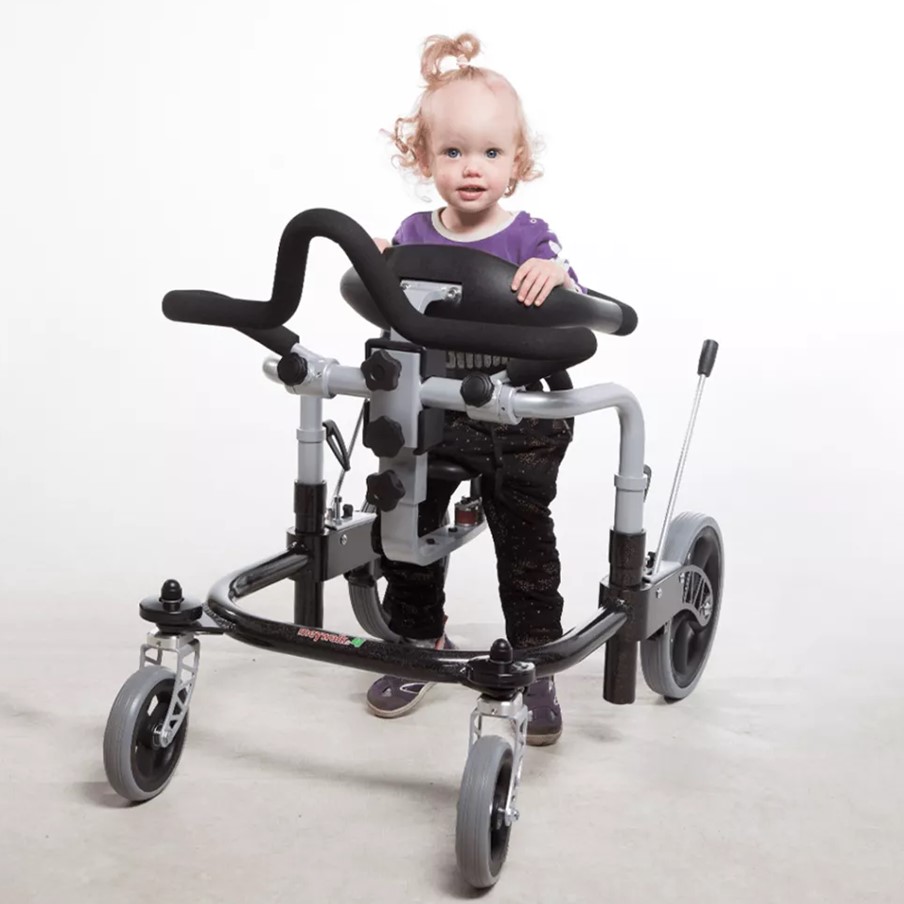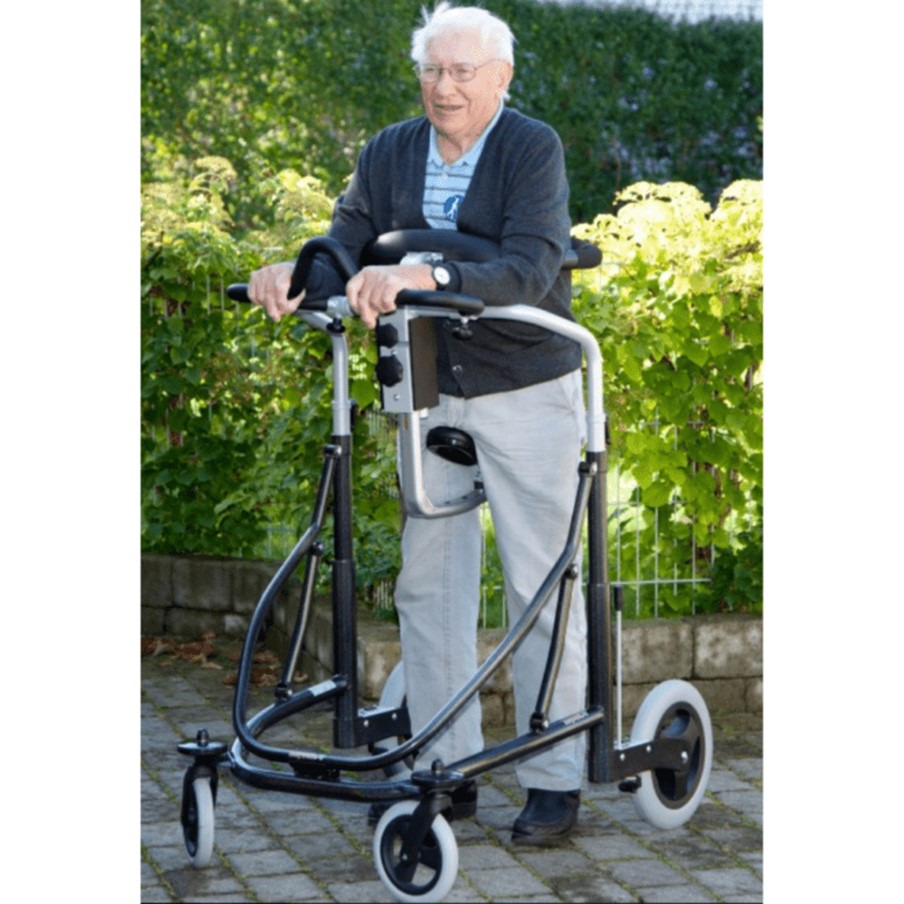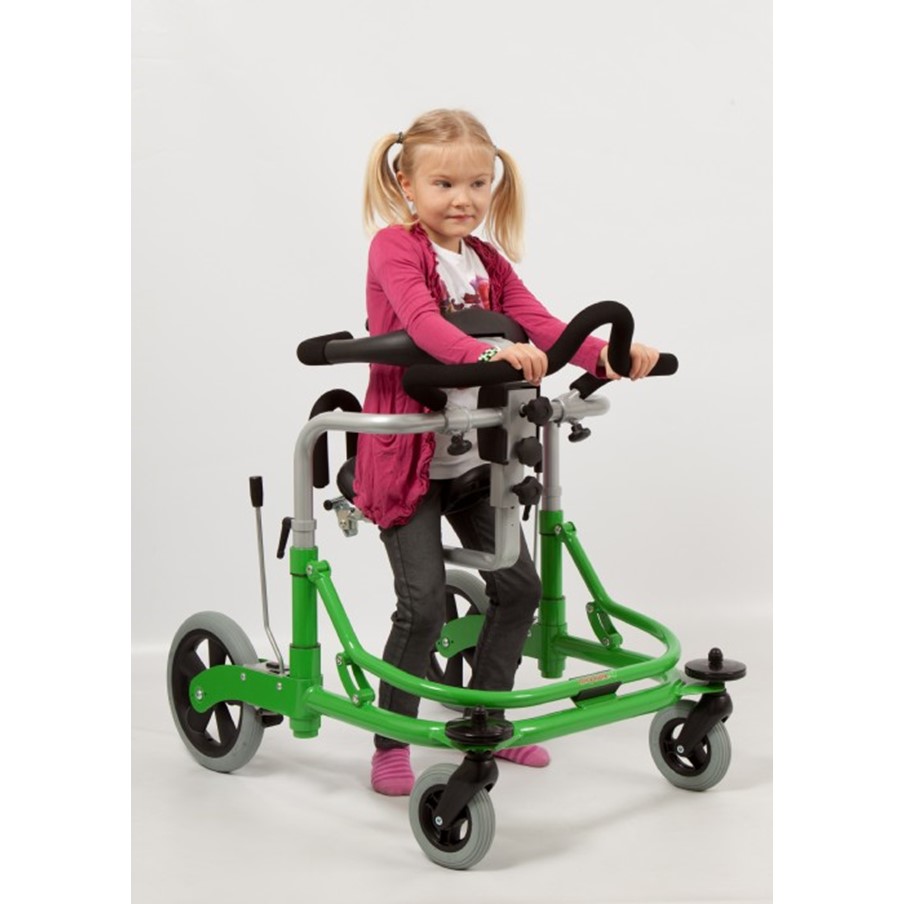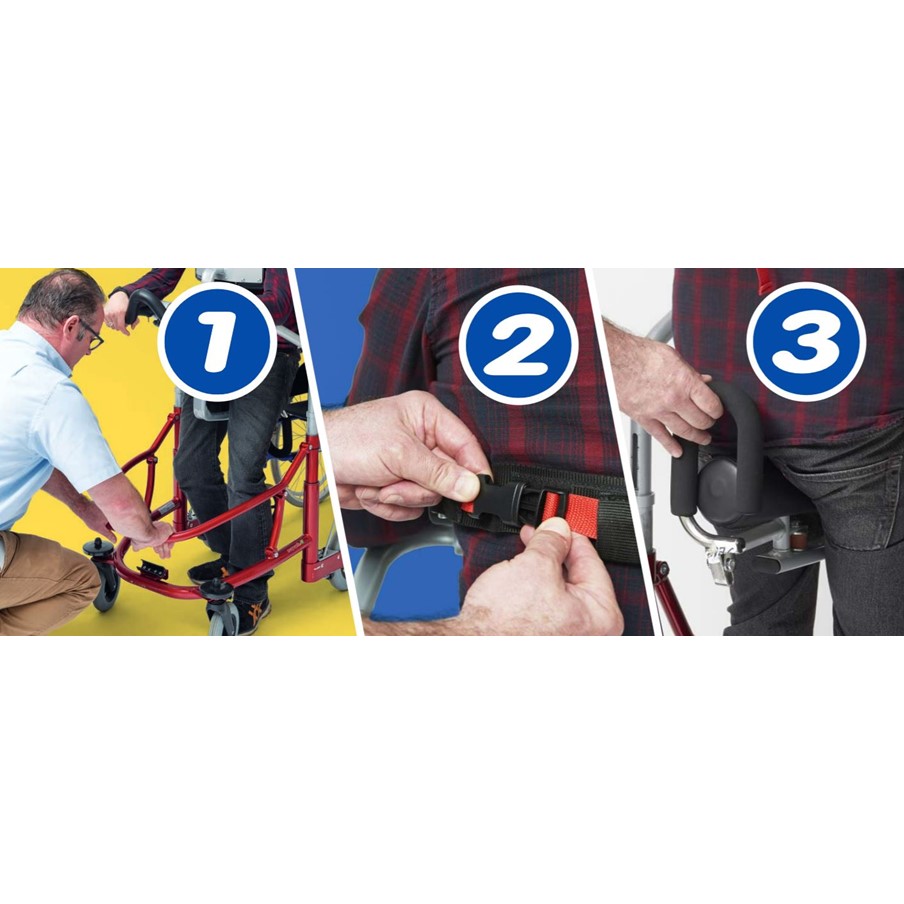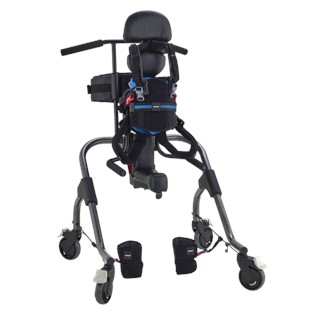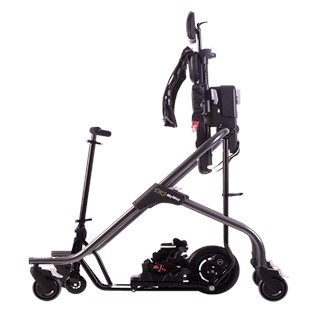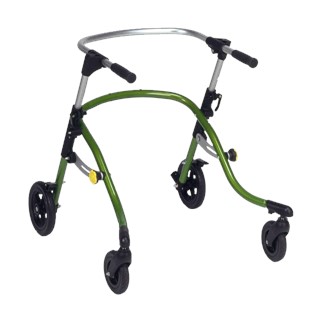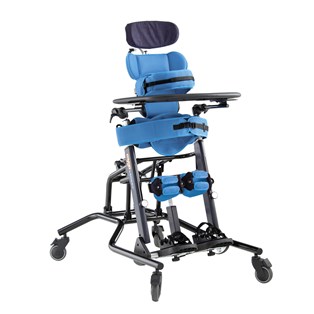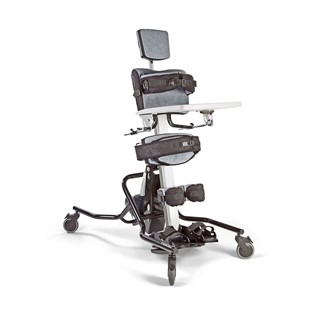Meywalk 4 Gait Trainer
A spring suspended gait trainer for people of all ages. The users of the Meywalk 4 are generally wheelchair users who require a high degree of support to stand up and walk. While working as a gait trainer, the Meywalk 4 also enables the user to take part in everyday activities and experience their surroundings at eye level. For transfers, the seat unit can be lowered by using a swing bar, making it easier for the user to get in and out of the support and putting less strain on the carer.
This product is not available in your selected combination
Product Code: {{stockCode}}
Please note the selected product option is not available for trial.
The Meywalk 4 is a gait trainer designed to encourage self-movement in children and adults suffering from motor disabilities.
This easy-to-use gait trainer provides optimal support to help the user stand and walk independently. The ability to move freely and interact socially at eye level promotes mobility and social participation, enhancing the user’s mental and physical wellbeing.
Benefits:
- Meywalk 4 stimulates and supports the body’s natural pattern of movement.
- User can be standing/walking despite the lack of or reduced standing function.
- Grows with the user thanks to the variable height adjustment of seat and body ring.
- Versatile and adjusts easily without the use of tools.
- Easy to separate for transport purposes.
The Meywalk 4 promotes self-movement while stimulating and supporting the user’s natural pattern of movement.
Designed with a dynamic seat and a unique spring system, the gait trainer follows the user’s movements, ensuring optimal weight-bearing. The body ring allows for movement of the trunk while supporting an optimal upright posture.
The Meywalk 4 is safe and easy to access. Remember to apply the brake on the gait trainer and use the integrated swing bar to lower the seat, and then the user can relocate to the gait trainer with minimal assistance. The seat is easily raised using the built-in tilt bracket.
The user is not dependent on their forearms for weight-bearing, promoting social participation and enabling the person to eat/drink while using the gait trainer. The integrated hand bar is easily adjusted to fit the user if additional support is needed.
Daily standing in an upright position influences joint development, bone density and muscle strength profoundly so, mobility is maintained, while endurance and balance increase. Developing the ability to stand and walk with a Meywalk 4 vastly improves blood circulation, digestion and respiration, promoting natural appetite, better sleep and overall well-being, which is vital and often a prerequisite for managing others daily activities.
Please note, alternative terms for a rollator are walker, wheeled walker, walking frame and Zimmer frame.
| Product Size | Micro Black / Mini Yellow / Small Green / Medium Red / Large Black |
| Total Product Length | 770 mm / 800 mm / 850 mm / 860 mm / 1000mm |
| Outside Width | 510 mm / 560 mm / 620 mm / 620 mm / 680 mm |
| Inside Width | 420 mm / 440mm / 490 mm / 500 mm / 570 mm |
| Seat Height | 250 - 450 mm / 280 - 520 mm / 500 - 670 mm / 600 - 840 mm / 800 - 1040 mm |
| Trunk Support Height | 520 - 650 mm / 550 - 770 mm / 740 - 990 mm / 1010 - 1330 mm / 1200 - 1520 mm |
| User Weight Limit | 60 kg / 80 kg / 100 kg / 130 kg / 130 kg |
| Total Product Weight | 13 kg / 20 kg / 25 kg / 32 kg / 34 kg |
| Warranty | 24 Months |
There are lots of different types of wheeled walking frames – how do I know which one is best for me?
The following explains the different pros & cons with each type of walker
Tri Walkers – This type of walker has a swiveling front wheel and two fixed rear wheels, one on each corner. The frame has handle bars; the user only needs to push the frame to walk. As this frame is completely wheeled, there is no need to lift it. These frames are easily folded and narrower than other types of walkers. A carry bag is easily accessible and the height adjustable handles make it suitable for a range of heights.
Four Wheeled Walkers – The two front wheels swivel to enable the frame to turn, while the rear two are fixed for stability. This frame has a seat incorporated which can very useful if the user needs to rest, there is also a storage bag under the seat so personal items can easily be carried. It can be used both indoors and outdoors. Four wheeled walkers are wider than tri walkers and are less maneuverable; however they provide more stability and are less likely to tip over.
Petite Walker - This is a smaller version of the four wheeled walker and is ideal for smaller clients. This type of frame has a seat which is lower than other models; this allows more stability for small clients who would like to have a seat and rest.
Bariatric Walker – This is a type of four wheeled walker, complete with seat and backrest. Bariatric walkers are a good option for larger clients who require support while walking. It can hold up to 225 kg.
Gutter Frame Walker – This is a type of walker that has forearm supports; these can assist clients who have less upper body/hand strength. This walker has a seat, basket, and four wheels. This walker works wells in a variety of environments both at home and in the community.
What features should I consider when selecting a rollator?
Wheel size: 6 inch castors work well for smaller users who are 5’2” or shorter. This size is ideal for indoor use. 8 inch castors are a good option for people who are using the walker both indoors and outdoors and are generally more active.
Folding: A folding walking frame means that it will easily fit into a small car and can be stored in a small space.
Seat: A seat on a walker can allow the user to stop and take a rest when needed. The seats are located between the handle bars and are hinged so they can be lifted to access the storage bag underneath.
Braking System: Walking frames are engineered with different types of braking systems. The most common type is a hand brake which works by squeezing the brake handles. Relatively good hand mobility is needed for this function to work, however; it is possible to use pressure through the palm to apply the brake.
Product Weight: The weight of the walker can vary significantly. Most walkers are constructed of aluminium; however walkers that are able to support a heavier user are often made of steel. Generally aluminium walkers (like the three and four wheeled models) weigh between 5 – 7 kg, and the heavy duty models range on average between 10 – 12 kg.
How do I know what size is best for me?
Walkers have height adjustable handles; these can be set up to be the most comfortable height. The Petite Walker suits shorter people with heights under 5’2”, whereas standard walkers work well for people from 5’3” upwards.
What is the ideal handle height from the ground in relation to the user?
To get the handles of a walking frame at the right height for the user, it is more about the height of the user. When the user has their hands by their side, the hand grips should be set just above the wrist joint. This means that when using the walking frame, the user will have their elbows slightly bent but be fairly upright.
